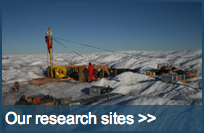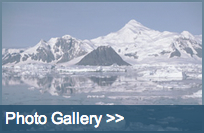Main tasks within ice2sea: Involvement in W3.2
Description of institution: The University of Leeds (UoL) is one of the largest Universities in the UK with over 32,000 fulltime students, 7,500 staff and an annual turnover of €545 million. Leeds is among the top ten universities for research in the UK with some 3,000 full-time researchers and an annual research income of more than €120 million, of which ~10% is from EU awards. The University is the national leader in receipt of NERC funding for the last two years and has gained a number of interdisciplinary awards spanning the natural and social science dimensions of environmental research. The School of Earth and Environment (SEE) is a large school with ~70 academic staff, ~35 support staff and ~65 Postdoctoral Research Fellows and Associates. The interdisciplinary research conducted spans a full range of time and space in investigations of the Earth, the hydrosphere and the atmosphere, including interconnections with issues of environmental management and sustainability. The SEE houses the Institute for Climate and Atmospheric Science, comprising over 20 academic staff and over 50 postdoctoral and postgraduate researchers. The Institute for Climate and Atmospheric Science is dedicated to understanding the physical and chemical processes that govern the behaviour of the Earth’s atmosphere and climate. Processes are investigated using Earth observation, numerical models and field and laboratory experiments. Investigations of global climate change are an area of strategic growth, with a number of associated recent appointments.
Main tasks: The main tasks to be undertaken at the UoL contribute towards developing satellite observations of ice sheet mass trends. Specifically, these include:
- Integration of measurements from optical and microwave satellite sensors to produce a time series of ice sheet elevation change from 1992-2008.
- Derive time series of ice velocities at, and upstream of, the grounding lines of outlet glaciers and ice streams from existing and newly acquired InSAR and speckle tracking data.
Previous experience relevant to tasks: Previous work undertaken at the UoE related to this proposal includes investigations of the role of Antarctica in global sea level rise (1), ice-shelf ocean interactions (2), hydraulic connections beneath ice sheets (3), and the sea level contribution due to Earths ice sheets (4, 5).
Staff member: Dr. Andrew Shepherd
Profile of staff member: Andrew Shepherd is Professor of Earth Observation at the University of Leeds. He is a member of the NERC National Centre for Earth Observation, coordinator of the European Space Agency VECTRA InSAR consortium, and a contributing author of the Fourth Assessment Report of the Intergovernmental Panel on Climate Change. Prof. Shepherd was educated at the University of Leicester, where he gained B.Sc. in Astrophysics and Ph.D. in Physics. In 1998 he moved to University College London, he was appointed Lecturer at the University of Cambridge in 2002, and Reader at the University of Edinburgh in 2006. Prof. Shepherd’s field of expertise is satellite remote sensing of the cryosphere, with particular emphasis on the quantitative techniques of radar interferometry and radar altimetry. He has also worked on studies of arid land degradation using satellite infrared radiometry and models of atmospheric radiative transfer, and he has led satellite validation campaigns in Europe, Africa, and Antarctica. He has published over 30 papers in major international journals and his work is highly cited. His currently funded research includes investigations of the stability of the Larsen Ice Shelf in Antarctica, developing methods to retrieve elevation in regions of rugged terrain using the CryoSat-2 interferometric altimeter, estimates of the sea level contribution due to Antarctica and Greenland, monitoring changes in Earth’s glaciers and ice caps, and developing a new satellite synthetic aperture radar mission concept. He is associated scientist on the Tandem-X satellite mission, and he is a member of the CryoSat Calibration, Validation, and Retrieval Team.
Selected references:
A. Shepherd, D. J. Wingham, J. A. D. Mansley, H. F. J. Corr, Science 291, 862 (2001).
A. Shepherd, D. Wingham, T. Payne, P. Skvarca, Science 302, 856 (2003).
D. J. Wingham, M. J. Siegert, A. Shepherd, A. S. Muir, Nature 440, 1033 (2006).
A. Shepherd, D. Wingham, Science 315, 1529 (2007).
G. A. Meehl et al., in Climate Change 2007: The Physical Science Basis. Contribution of Working Group I to the Fourth Assessment Report of the Intergovernmental Panel on Climate Change, S. Solomon et al., Eds. (Cambridge University Press, Cambridge, United Kingdom and New York, NY, USA., 2007), Chapter 10, pp. 747-846.


